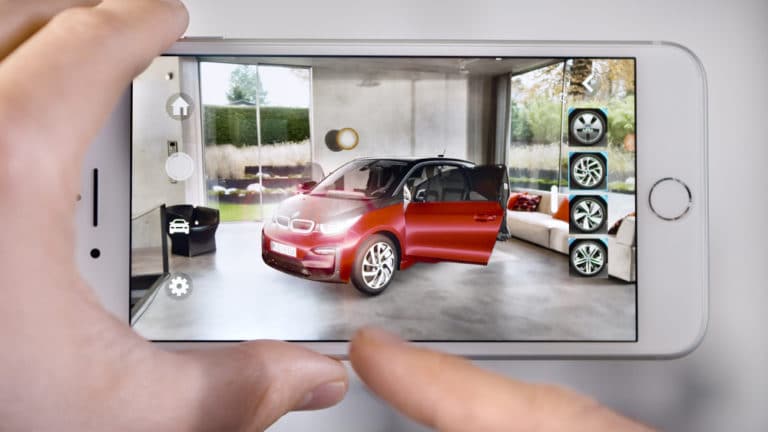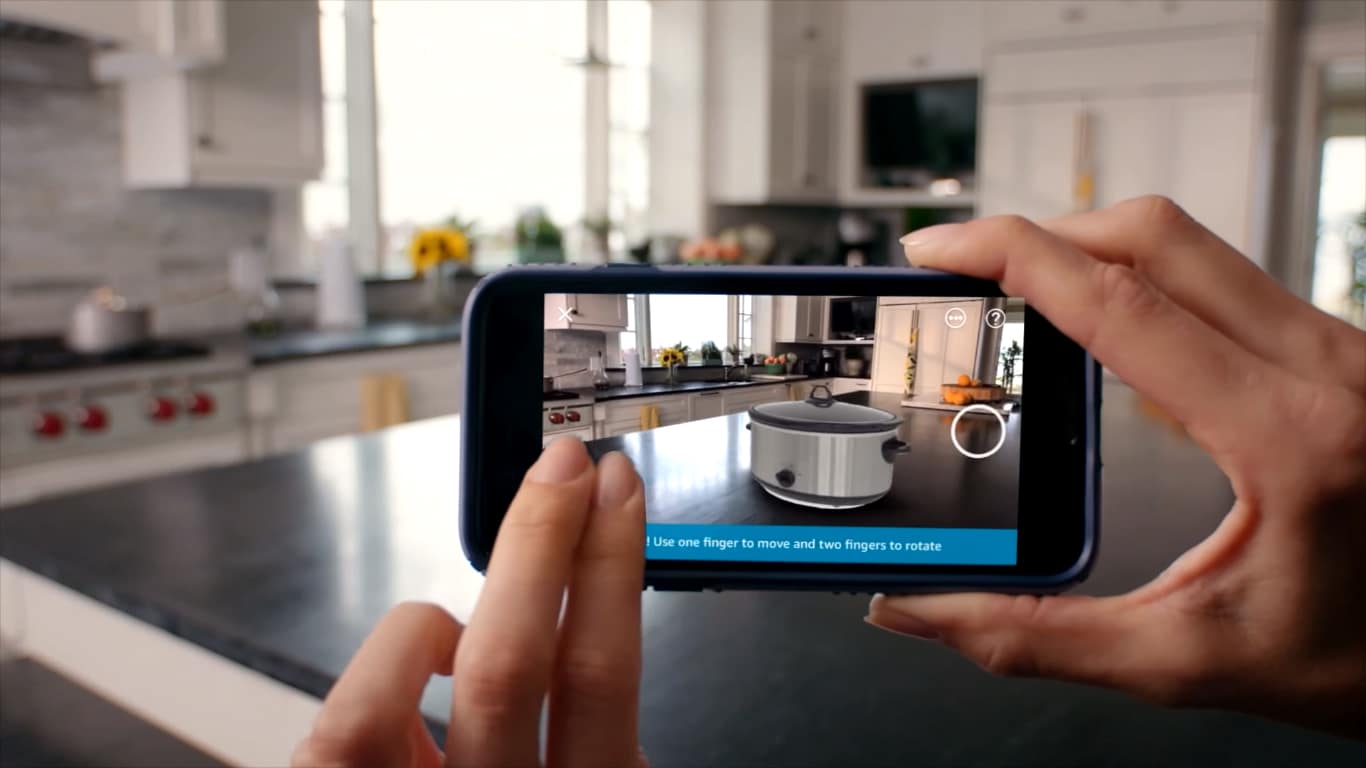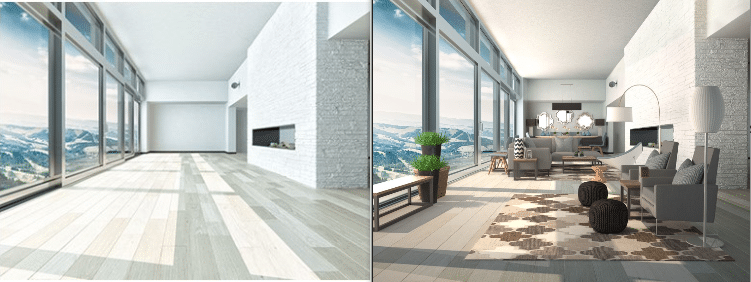
In AR’s early days, we’re learning a lot about consumer behavior and preferences. The same learning curve defined early days of smartphone apps… and there were lots of misfires before we saw the Ubers and Snapchats of the world.
One lesson so far is that consumer AR use cases will be fairly limited. It’s not a silver bullet and it’s not for everyone. At Street Fight Summit West last week, we discussed how mobile will be AR’s predominant form factor due to stylistic barriers for consumer AR glasses.
As for the apps and use cases gaining traction, many are local-oriented. One top AR app categories far is visualizing large items, such as a car in your driveway, a new couch in your living room or a flat screen TV on your wall. It’s about aiding the product consideration cycle.
So far, this includes apps like BMW’s iVisualizer. Not only does it let you walk around a virtual car in your driveway, viewed through your smartphone’s camera, but it lets you save customizations then research or purchase the car locally. This brings it from novelty to attributable value.
Amazon’s app meanwhile houses an AR feature that lets you place graphical mockups of products around your house before ordering. This helps visualize stylistic as well as practical factors like if the TV will fit on the wall. Amazon likes it because it reduces margin-depleting TV returns.

Furniture visualization company roOomy is built on a similar principle, but takes it a step further. It not only lets you visualize new furniture around the house, but it also wants to sell you the house. This bolts AR furniture visualization to a logical (and local) context: real estate sales.
The three sides of its model involve furniture dealers, realtors and home buyers. Furniture dealers demo their products in a natural format, while real estate professionals can “stage,” homes in a more effective (and cheaper) way. And consumers get a more realistic picture of both.
“We can showcase a property to its full potential,” roOomy BD Director Taylor Wilding told ARtillry recently, “and at the same time enhance the experience for the home shopper as they can furnish their new home right within the same context.”
Combining all of these components has created a sort of Yin and Yang in roOomy’s interlinked business model. Its diversified revenue stream includes 3D modeling and rendering technology, affiliate revenue for furniture sales, and fees from real estate agents.
To do all this, Rooomy first converts furniture retailers’ 2D catalogues into 3D graphics. Then realtors can stage empty rooms with its library of 120,000 pieces, which home buyers view dynamically through its AR app. This natural habitat for furniture boosts conversions.

“A differentiating piece for us is that we’re helping retailers intercept customers at an earlier part of the buying cycle, during a home purchase,” said Wilding. “Someone moving will spend on furniture upwards of 5x what someone who isn’t moving will spend.”
Lastly, real estate agents themselves pay roOomy on a per-listing basis. And they tend to be early adopters, given a hunger for tools that can give them an edge in closing big deals. There’s also cost savings in virtual staging, and further incentive through a cut of furniture sales.
Of course, viewing a new home through the small window of your smartphone still needs time to marinate as a consumer activity. But the Amazons and BMWs of the world could accelerate that learning curve, not to mention the muscle behind Apple (ARkit) and Google (ARCore).
“As eCommerce sites launch ARKit apps, it’s becoming more and more familiar. People understand exactly how to use it,” said Wilding. “And since ARCore and ARkit have been released, our modeling business for home furniture retailers has taken off.”
For a deeper dive on AR & VR insights, see ARtillry’s new intelligence subscription, and sign up for the free ARtillry Weekly newsletter.
Disclosure: ARtillry has no financial stake in the companies mentioned in this post, nor received payment for its production. Disclosure and ethics policy can be seen here.
